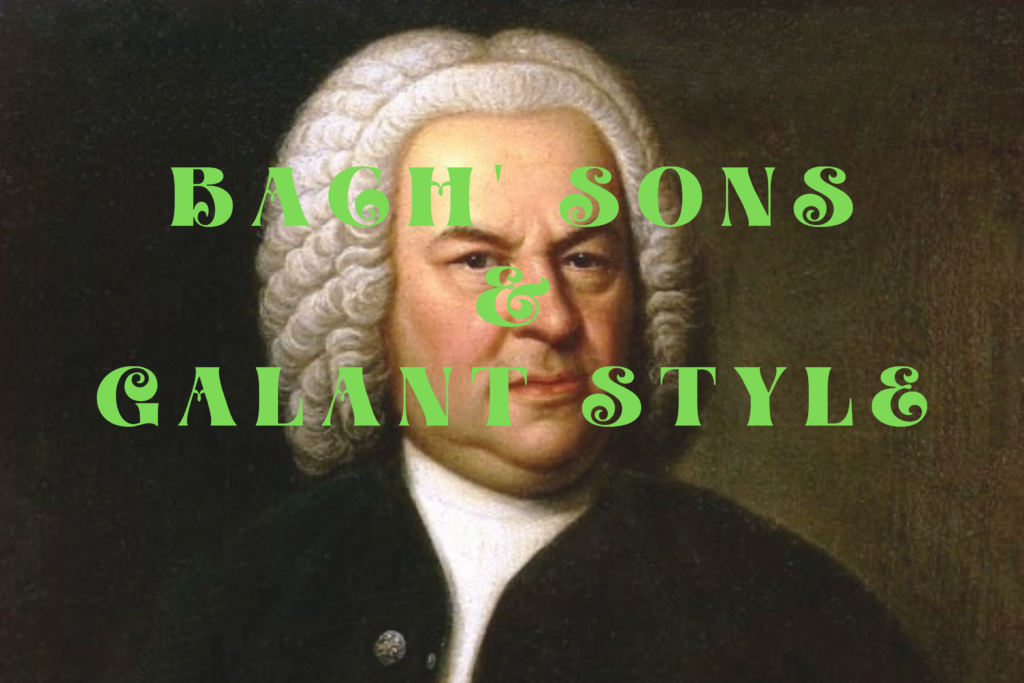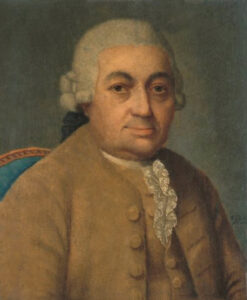Piano Lessons
Bach’s sons & Galant Music Style
Definition
The Music of Galant Style was a popular musical movement that emerged in the mid-18th century, around the same time that Johann Sebastian Bach‘s sons began to make their mark on the musical world.
The Galant music style was characterized by a focus on melody, simplicity, and clarity, as well as a rejection of the complex counterpoint and ornamental embellishments of the Baroque era.
Also, it is known by the term “rococo“, which comes from the French word “rocaille,” meaning “shellwork”. It was a style that was characterized by intricate and ornate designs that were often inspired by nature. This style was popular in art, architecture, and fashion, and it also influenced the music of the time.
Main Characteristics
During Baroque period, the music was lighter, more decorative, and more playful. The melodies were often simple and easy to remember, and the rhythms were often dance-like.
One of the most notable features of the Galant style of music was its emphasis on melody. Melody was seen as the most important element of music, and composers focused on creating memorable and singable melodies that could be easily understood and appreciated by audiences. This emphasis on melody is evident in the music of Bach’s sons, particularly in their instrumental works.
Bach’ Sons & Their Contribution to Music
Johann Sebastian Bach is undoubtedly one of the most celebrated and influential composers of all time. But did you know that Bach had several talented sons who also became prominent composers? In this article, we will take a closer look at the music of Bach’s sons.
Bach’s sons were instrumental in the development of the Galant musical style, and their music is often considered some of the finest examples of this musical movement.
Johann Christian Bach
One of the most famous composers of Rococo music was Johann Sebastian Bach’s youngest son, Johann Christian Bach. He was known as the “London Bach” because he spent most of his career in London, where he was a favourite of the royal family. His music was popular among the upper classes, and he was considered one of the most important composers of the time. His music is characterized by its graceful melodies, elegant harmonies, and charming use of orchestration. He was a significant influence on the early classical style and was highly regarded by Mozart, who studied his music extensively.
One of Johann Christian Bach’s most famous works is his Symphony Op. 18, No. 4 in B-flat major, which is often referred to as the “Grand Overture.” This symphony is a prime example of his skilful use of orchestration, with its bright and lively themes and richly textured instrumentation.
Carl Philipp Emanuel Bach
Carl Philipp Emanuel Bach, in particular, was a key figure in the development of the Galant style, and his music helped to popularize it across Europe.
Carl Philipp Emanuel Bach, born in Weimar in 1714, was the second-oldest son of Johann Sebastian Bach. He was a prolific composer, writing in a variety of genres, including symphonies, concertos, keyboard sonatas, and vocal works. His music is notable for its emotional depth, expressive harmonies, and complex rhythms. He is considered one of the foremost composers of the early classical period well-known as Rococo. It’s worth noting that this composer set the foundation for the sonata form, a structure which would become developed and established during the following musical period, namely, classicism or the Century of Enlightenment.
One of Carl Philipp Emanuel Bach’s most famous works is his Keyboard Sonata in A minor, Wq. 57/2, which is known for its intricate, improvisatory style and dramatic contrasts. This piece is a prime example of his innovative approach to harmony and melody.
Johann Christoph Friedrich Bach
Johann Christoph Friedrich Bach, born in Leipzig in 1732, was the eldest surviving son of Johann Sebastian Bach. He was a versatile composer, writing in a variety of styles, including symphonies, chamber music, keyboard music, and vocal works. His music is known for its lyrical melodies, delicate textures, and refined sense of harmony.
One of Johann Christoph Friedrich Bach’s most famous works is his Symphony in D major, which is notable for its graceful melodies, elegant phrasing, and bright orchestration. This symphony is a prime example of his skilful use of counterpoint and his mastery of the classical style.
Conclusion
The music of Bach’s sons is a testament to the enduring legacy of one of the greatest composers of all time. Each of his sons developed their unique style, drawing on the rich musical traditions of their father’s legacy while also forging new paths in the development of classical music. Their contributions to music have had a lasting impact, and their works continue to be celebrated and admired to this day.



